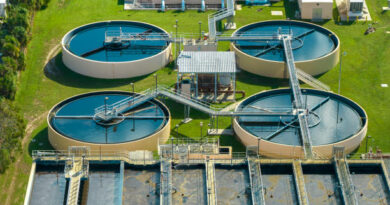Sustainable Innovative Business Solutions for Australian Companies
As climate change and environmental degradation continue to shape global conversations, the need for businesses to adopt sustainable practices has never been more urgent. In Australia, where diverse ecosystems and natural landscapes face significant threats from industrial activities, the drive for sustainability has become not just a moral obligation but also a strategic business decision. With increasing awareness of environmental issues, consumers are now demanding more sustainable products and services, and companies are under pressure to reduce their environmental footprint.
Adopting innovative business solutions that prioritize sustainability is no longer just a trend; it’s a necessity. Australian companies across various sectors are taking bold steps to integrate sustainable practices into their business models, benefiting both the planet and their bottom lines. Let’s explore how businesses in Australia can adopt sustainable practices through innovative solutions, reducing their environmental impact while simultaneously enhancing profitability.
1. Embracing Renewable Energy
One of the most significant ways for Australian businesses to reduce their environmental footprint is by transitioning to renewable energy sources. Australia is uniquely positioned to harness renewable energy due to its abundant solar, wind, and hydro resources. Companies across the nation are increasingly shifting away from fossil fuels in favor of clean energy solutions, thus reducing greenhouse gas emissions and lowering operational costs in the long term.
For example, businesses can install solar panels on their buildings, invest in wind energy, or even purchase renewable energy credits (RECs) to offset their carbon emissions. Large-scale corporations such as supermarkets, tech companies, and manufacturers are beginning to incorporate renewable energy solutions as part of their sustainability strategies. By doing so, they not only minimize their environmental impact but also benefit from reduced energy bills, greater energy independence, and potential tax incentives from the government.
The integration of renewable energy technologies is an essential component of the Australian government’s broader commitment to achieving net-zero emissions by 2050. As a result, businesses adopting renewable energy solutions will align themselves with national climate goals and set themselves up for long-term resilience.
2. Circular Economy and Waste Reduction
In traditional business models, products are often manufactured, consumed, and then disposed of, contributing to waste and environmental harm. In contrast, the concept of a circular economy promotes sustainability by keeping products, materials, and resources in use for as long as possible. Australian businesses are increasingly adopting circular economy principles to reduce waste, conserve resources, and extend product life cycles.
For instance, many companies are introducing practices such as product reuse, repair, refurbishment, and recycling to ensure that their products do not end up in landfills. Innovators are designing products that are made from recyclable materials or can be easily disassembled and repurposed at the end of their useful life. This approach reduces the demand for raw materials and minimizes the environmental impact associated with waste disposal.
Businesses in industries such as manufacturing, fashion, and technology are increasingly partnering with waste management organizations to develop waste reduction strategies. By adopting practices like zero-waste initiatives, reducing packaging, and switching to biodegradable or recyclable materials, businesses can significantly reduce their environmental footprint. The beauty of circular business models is that they not only reduce waste but also lead to cost savings by minimizing material costs and improving resource efficiency.
3. Green Supply Chains and Sustainable Sourcing
The environmental impact of a business extends far beyond its immediate operations. Supply chains, which often span continents and involve multiple suppliers, can contribute significantly to a company’s carbon footprint. Australian businesses are beginning to reimagine their supply chain models, focusing on sustainable sourcing and reducing the environmental impact of their products and services at every stage of production.
Adopting a green supply chain involves partnering with suppliers who prioritize sustainability in their own operations, such as using eco-friendly materials, reducing energy consumption, and adopting ethical labor practices. Companies are also reducing transportation emissions by choosing local suppliers or optimizing logistics to minimize fuel usage. Additionally, businesses can implement more efficient inventory management systems to reduce waste and ensure that resources are used responsibly.
For example, Australian food producers are working with farmers who use regenerative agricultural practices that promote soil health, reduce water usage, and minimize the need for chemical fertilizers and pesticides. By prioritizing sustainable sourcing, businesses can support local economies, reduce their environmental footprint, and enhance their brand image among environmentally conscious consumers.
4. Sustainable Product Design and Eco-Innovation
Innovative product design is another area where Australian companies can make significant strides in sustainability. Eco-design refers to the process of designing products with minimal environmental impact throughout their lifecycle. This includes considering factors such as energy usage, materials, production methods, and end-of-life disposal. By integrating sustainability into the design process, businesses can create products that are energy-efficient, use sustainable materials, and are durable and recyclable.
A prime example of eco-innovation can be seen in the Australian construction industry, where businesses are incorporating sustainable building materials, such as recycled steel, bamboo, and low-carbon concrete, into their designs. Green building techniques, like energy-efficient insulation, smart heating and cooling systems, and renewable energy integration, are also gaining popularity in the sector.
Australian startups and tech companies are also leading the charge in eco-innovation by developing smart technologies that help businesses optimize their resource consumption. For instance, smart sensors and Internet of Things (IoT) technologies can monitor energy usage, water consumption, and waste generation, enabling companies to take real-time action to minimize their environmental footprint. By using these technologies, businesses can identify inefficiencies and implement corrective actions that reduce waste, conserve resources, and lower energy bills.
5. Eco-Friendly Transportation and Mobility Solutions
Transport and logistics account for a significant portion of Australia’s carbon emissions, especially given the country’s vast size and reliance on road freight. As part of their sustainability efforts, Australian businesses are adopting eco-friendly transportation solutions that reduce emissions, lower fuel consumption, and promote sustainable mobility.
Electric vehicles (EVs) and hybrid vehicles are becoming increasingly popular in corporate fleets, helping companies reduce their reliance on fossil fuels. Many companies are also implementing green logistics strategies, such as optimizing delivery routes to reduce fuel consumption, consolidating shipments, and using alternative fuel sources like biofuels or hydrogen.
In addition to electric vehicles, businesses are exploring innovative solutions like drones and autonomous vehicles to streamline logistics and reduce carbon emissions. These technologies can reduce the need for traditional trucks, which emit high levels of CO2, and create more efficient systems for product delivery.
By incorporating sustainable transportation methods into their operations, Australian businesses can not only contribute to reducing overall emissions but also improve their operational efficiency and reduce transportation costs over time.
6. Employee Engagement and Green Office Practices
Internal sustainability practices also play a crucial role in reducing a company’s environmental footprint. Australian businesses are increasingly adopting green office practices that promote energy efficiency, waste reduction, and sustainable employee behavior. Simple measures, such as reducing paper use, promoting digital communication, and encouraging employees to recycle, can go a long way in minimizing environmental impact.
Moreover, many companies are embracing remote work, which has a dual benefit: reducing office energy consumption and decreasing employees’ carbon footprint related to commuting. To further encourage sustainable behavior, some businesses are also offering employees incentives for adopting eco-friendly practices, such as using public transport, cycling to work, or carpooling.
By fostering a culture of sustainability within the workplace, Australian businesses not only reduce their environmental impact but also increase employee engagement and morale, positioning themselves as responsible corporate citizens.
Conclusion
Sustainability is no longer a mere buzzword for Australian businesses—it’s a vital component of long-term success. By adopting innovative solutions like renewable energy, circular economy models, sustainable sourcing, eco-design, and green logistics, companies can significantly reduce their environmental footprint while boosting operational efficiency and profitability. The push for sustainability is not just about being environmentally responsible; it’s about staying competitive in an increasingly eco-conscious market.
As consumers demand more sustainable products and services, businesses that prioritize sustainability will enjoy long-term benefits, including improved brand loyalty, cost savings, and regulatory compliance. In this regard, Australian companies have an opportunity to lead by example and set a standard for the future of business innovation that is not only profitable but also environmentally sustainable.




